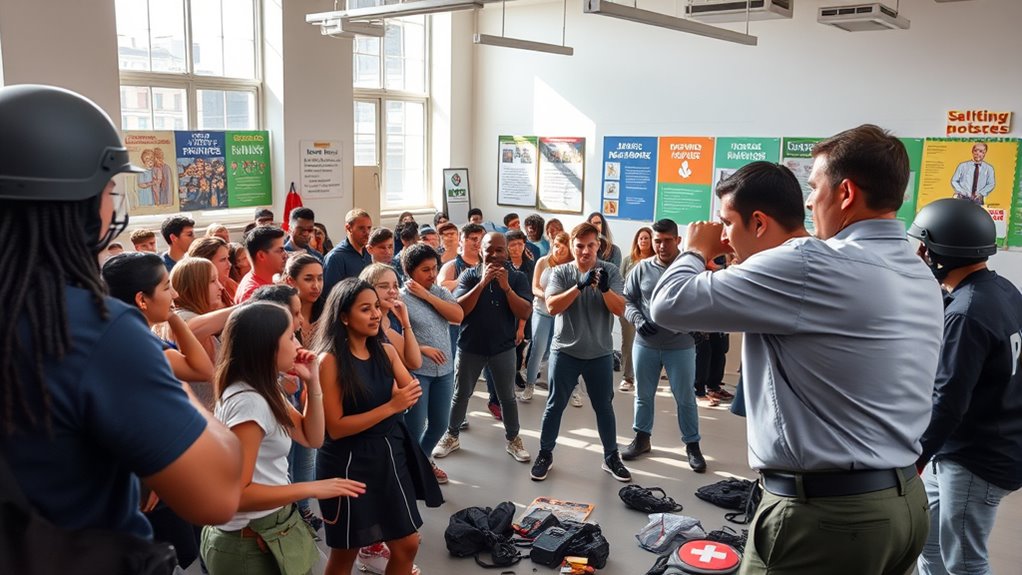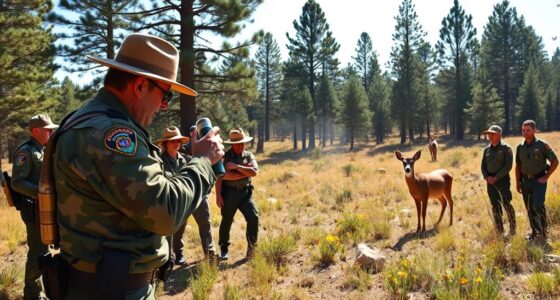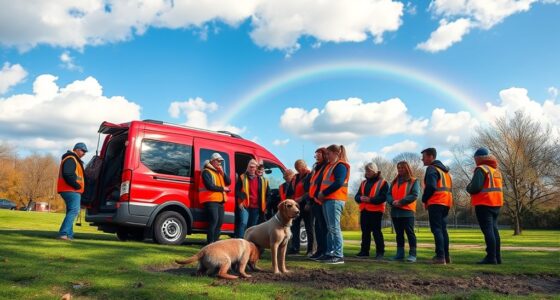Riot preparedness classes are filling up fast in urban centers as responders see the need for specialized training in crowd control and civil unrest management. These programs equip you with crucial skills like incident command and multi-agency coordination to handle chaotic scenarios effectively. You’ll gain practical experience through scenario-based training, focusing on urban vulnerabilities and the importance of diversity in response efforts. Keep going to discover the benefits of these essential courses that guarantee public safety.
Key Takeaways
- Riot preparedness classes are essential for emergency responders to effectively manage chaotic urban situations and protests.
- The curriculum includes crowd control techniques, incident command frameworks, and multi-agency coordination to enhance teamwork.
- Scenario-based training offers practical experience in real-world riot conditions, improving response readiness.
- Urban assessments in training address infrastructure vulnerabilities, ensuring better emergency response strategies in high-density areas.
- The focus on diversity and inclusion prepares responders to understand social dynamics during urban riots, enhancing overall effectiveness.

When you’re faced with the unpredictability of urban riots, having the right training can make all the difference. Riot Preparedness Classes are essential for emergency responders, especially in urban settings where the challenges can be complex. The courses offered by the Center for Domestic Preparedness (CDP) focus on crucial skills like crowd control and managing civil actions, ensuring that you’re equipped to handle chaotic situations effectively.
Urban environments present unique challenges. High population density and intricate infrastructures can complicate response efforts. That’s why law enforcement and fire service personnel often participate in these training programs; they learn to navigate these complexities while ensuring public safety. With protesters increasingly using sophisticated devices, specialized training becomes even more important. You’ll gain insights into the latest tactics and technologies to address these challenges effectively.
The curriculum covers significant components like incident command, which provides you with frameworks for organizing emergency operations. You’ll also explore crowd control techniques, necessary for managing protests or riots. Multi-agency coordination is another key focus, emphasizing the importance of teamwork between different emergency response agencies. This cooperative approach strengthens your ability to respond effectively in real-time.
Health and safety considerations are paramount, especially when working in hazardous conditions. The courses also emphasize urban resilience, helping you understand how cities can better cope with emergencies. You’ll learn to conduct urban assessments, identifying vulnerabilities in infrastructure that could affect response strategies. This knowledge is invaluable not just for immediate response but for long-term urban planning.
Scenario-based training allows you to simulate real-world riot situations, enhancing your preparedness through practical experience. Instructors with extensive experience in incident response lead these sessions, ensuring you’re learning from those who’ve been in the field. Participant feedback often highlights the effectiveness of these programs, underscoring their importance in readiness for urban emergencies.
Additionally, the training addresses the importance of diversity and inclusion in response efforts. Understanding the social dynamics at play in urban riots can help you respond more effectively. As urban centers continue to face challenges, the demand for Riot Preparedness Classes is growing.
Frequently Asked Questions
What Qualifications Do Instructors Have for Riot Preparedness Classes?
Instructors for riot preparedness classes typically have extensive law enforcement experience, ensuring they understand crowd control and public disturbances.
They maintain high physical fitness levels, possess strong communication skills, and are knowledgeable about legal frameworks.
Many have specialized training, certifications in crowd control, and regularly participate in ongoing education.
Their expertise includes arrest and control techniques, threat assessment, and practical training methodologies, which help you gain valuable skills in managing challenging situations effectively.
Are There Age Restrictions for Participants in These Classes?
When it comes to age restrictions for participants in these classes, you might find the rules are a mixed bag.
Generally, there aren’t strict age limits documented, so you could see a wide range of participants. These classes aim to equip everyone with essential skills, regardless of age, ensuring you can learn valuable tactics and legal considerations.
How Much Do Riot Preparedness Classes Typically Cost?
Riot preparedness classes typically cost between $50 for registration fees and may include free workshops after you sign up.
Some training programs, like those from the Center for Domestic Preparedness, are fully funded by the federal government, making them free for you.
However, keep in mind that additional expenses for equipment or uniforms might arise, and prices can vary greatly depending on the type of training you choose to pursue.
What Materials or Supplies Should I Bring to Class?
When you attend a preparedness class, make sure to bring essential supplies.
Pack non-perishable food and water to keep your energy up. A first aid kit‘s vital for any minor injuries.
Don’t forget communication tools like portable chargers and walkie-talkies.
Wear protective gear, including a mask and gloves.
Finally, keep important documents handy, like identification and insurance cards, in case of emergencies.
Being well-prepared helps you stay focused and safe!
Can I Receive a Certification After Completing a Riot Preparedness Class?
Yes, you can receive a certification after completing a riot preparedness class, depending on the program you choose.
Many institutions, like FEMA, offer courses that not only provide practical skills but also culminate in a certification.
To earn that certification, you’ll typically need to pass an exam and complete evaluations.
This recognition can enhance your professional credentials and may also provide continuing education units for your career development.
Conclusion
As urban centers grow more volatile, it’s no surprise that riot preparedness classes are filling up fast. Taking these classes not only equips you with essential skills but also empowers you to stay safe in uncertain situations. Isn’t it better to be prepared than to be caught off guard? By investing a little time in learning how to navigate chaos, you’re not just protecting yourself; you’re also contributing to a more resilient community. Stay safe, stay informed!










